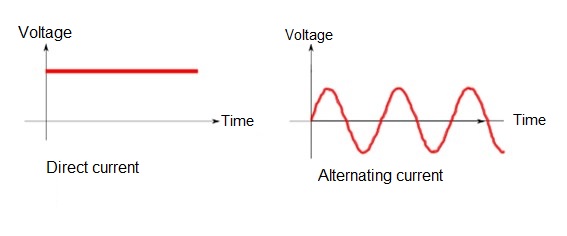
Electric currents
Electric currents are physical phenomena generated by the movement of the ion or electron. Direct electric current is the same as direct current, since, as its name suggests, it has a direct magnetization. The electric current is determined by OHM’s law.
I = V/R
V = Voltage
R= Resistance
The unit of measurement for electric current in amperes (A).
Types of electrical currents
There are several types of currents such as three-phase, sinusoidal, quasi-stationary, single-phase and eddy currents.
However, the main ones are direct and alternating electric currents.
Alternating electric current is a kind of electric current, whereby current flows through power lines and electricity in non-permanent and stable paths, but cyclically in both directions. An electric current with three alternating phases is known as a three-phase current. Three-phase current is three currents with the same value, amplitude, and frequency.

A direct current is a kind of electric current in which there is only movement in one direction. In addition, it has a constant polarity.
Characteristics of an electric current
It depends on the electric potential and the resistance of a conductor.
The electric current is measured with the galvanometer, which is an instrument that calibrates in amperes.
The actual direction of the electric current depends on the type of poleit has. Conventionally speaking, a direct current will follow positive ions. Metals have a negative polarity, which makes it easier for electrons to enter the material.
The electric current of materials
In an electric current, we find conductive materials such as metal and iron. In addition, we can find insulating materials such as rubber or plastic. As the name suggests, one allows the conduction of electric current and the other does not. On the other hand, we can find semiconductors, which we can choose whether they are conductors or insulators.
What is the relationship between electric current and resistance?
The greater the selection, length of the connector, and type of material, the greater the resistance in relation/proportion to the material.
Applications of electric currents
Electric current has 4 effects:
Heating effect: furnace
Luminous effect: fluorescent lamps. The electrons circulating through the electric current generate light, which is the origin of light bulbs.
Magnetic effect: electric motors
Chemical effect: electrolysis of water.